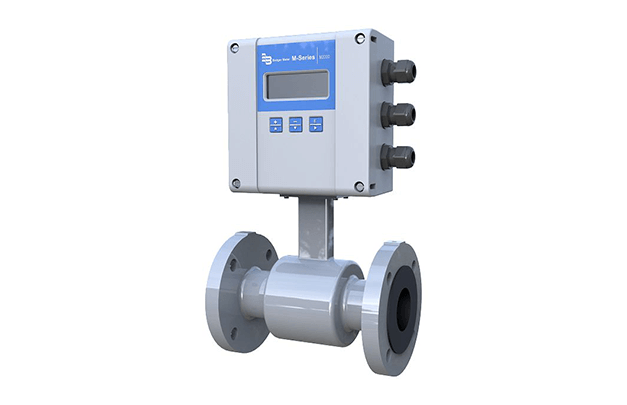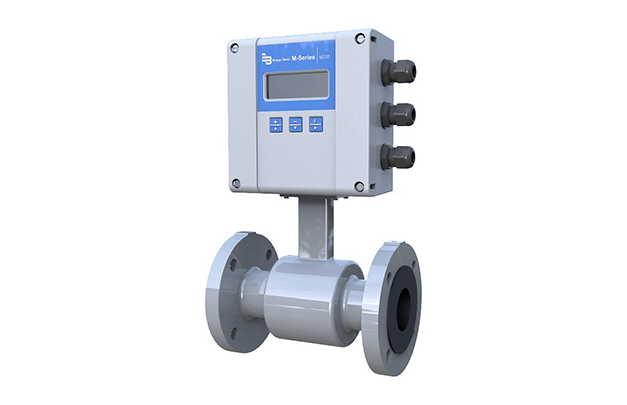 The importance of optimizing your flow meter system for precise, accurate dosing cannot be overstated. Not only can poor performing water meters increase your operating costs via maintenance intervals or downtime in production, but they can also hamper your ability to produce a quality product — in the concrete manufacturing industry, the performance of your flow meter can affect the appearance, quality, and durability of the concrete you produce.
The importance of optimizing your flow meter system for precise, accurate dosing cannot be overstated. Not only can poor performing water meters increase your operating costs via maintenance intervals or downtime in production, but they can also hamper your ability to produce a quality product — in the concrete manufacturing industry, the performance of your flow meter can affect the appearance, quality, and durability of the concrete you produce.
Suboptimal flow meter performance can also negatively impact your sustainability efforts as inefficient meter operation can increase your carbon emissions and energy usage and costs.
The ability to troubleshoot your flow meter system in the field is key in helping to extend the life of your equipment and maximize your productivity. With this in mind, let’s look at five frequently asked questions (FAQs) on troubleshooting your water flow meter system.
What position should I install my meter?
The ideal position for installation can vary on a couple of factors, but the two more important components are the type of flow meter you’re using and the application in which the meter is deployed. For example, Badger Meters can be installed in horizontal and vertical piping arrangements, and this level of versatility and flexibility is key in helping plant operators adapt to challenging or variable manufacturing environments.
When selecting the right flow meter to optimize your dosing accuracy with horizontal and vertical piping arrangements, Badger Meter’s RCDL and mag meters are the ideal solution, and Badger’s line of turbo water meters is designed for operation with only horizontal piping arrangements. In addition, the RCDL, mag, and turbo meters are engineered for simplified installation regardless of the piping arrangement to help you maximize uptime and production.
What are the requirements for straight pipe upstream and downstream of my meter?
The right ratio of upstream and downstream pipe diameters is critical to ensure the accuracy of your flow meter system. Achieving the ideal upstream and downstream pipe diameter starts with installing your meter so the flow arrow on the meter housing is aligned with the direction of fluid flow.
Once your meter is installed, the required ratio varies depending on the type of flow meter system you’re using. For example, here are the necessary upstream and downstream pipe diameters for Badger’s line of water meters:
- Badger turbo meters: 10 pipe diameters upstream of straight, unobstructed pipe and 5 pipe diameters downstream
- Badger RCDL meters: 3 pipe diameters upstream of straight, unobstructed pipe and 2 pipe diameters downstream
- Badger mag meters: 3 pipe diameters upstream of straight, unobstructed pipe and 2 pipe diameters downstream
What causes my flow meter to produce inaccurate readings?
Aside from proper installation and orientation, the capacity of your flow meter to produce accurate flow readings is one of the most important aspects of flow metering. Inaccurate readings not only make it virtually impossible to dispense fluid at the right time in the right volume, but it also complicates your ability to evaluate your use of raw materials, admixtures, or energy.
Common causes of inaccurate flow meter readings include:
- Improper calibration
- Worn or faulty rotating parts inside the meter
- Pockets of air trapped inside the meter or pipe
Recalibrating your meter or replacing worn or aging component parts will not only help produce more accurate meter readings, but it will also increase your process efficiency and help you better manage your use of resources.
Can I recalibrate my flow meter even though it's installed in line?
Yes — and in fact, IPEC’s maintenance technicians have the skill and experience to recalibrate your flow meter even though it’s installed. However, before recalibrating your flow meter, we recommend performing a simple calibration test as outlined in the video below to indicate whether the meter is still reading and batching water accurately.
If the calibration test does verify inaccurate or inefficient dosing and recalibration is not a viable option, you can create a permanent workaround by adjusting the scale factor to compensate for variances in rotor rotation.
Why is the flow meter display showing 'O' when there is flow of fluid through the meter?
A flow meter display reading a value of ‘0’ even though there is fluid being transferred through the meter can be caused by a couple different factors. One of the simpler and more common causes is a disconnected or broken cable signal between the components inside the meter and display — reconnecting or replacing the cable should correct this issue.
Meter displays reading ‘0’ can also stem from your meter’s pulse transmitter or scaler board not producing a pulse output, or from broken or malfunctioning measuring elements inside your flow meter.
The good news with each of these troubleshooting points is that IPEC’s partnership with Badger Meter helps our service technicians conduct field health checks, audits, meter calibration, and on-site maintenance and troubleshooting regardless of your application. Plus, our newly expanded warehouse makes it easy for plant operators to get the solutions they need quickly and efficiently.
What’s more, our Water Meter Exchange Program can help plant operators exchange their aging meter — from Badger Meter or any other manufacturer — for a new or refurbished meter. Plant operators can also exchange an aging meter head assembly for a new or refurbished head assembly as a fast and easy alternative to purchasing an entire water batching system.
Contact us to learn more about how we can help you ensure peak performance of your water meter system.

